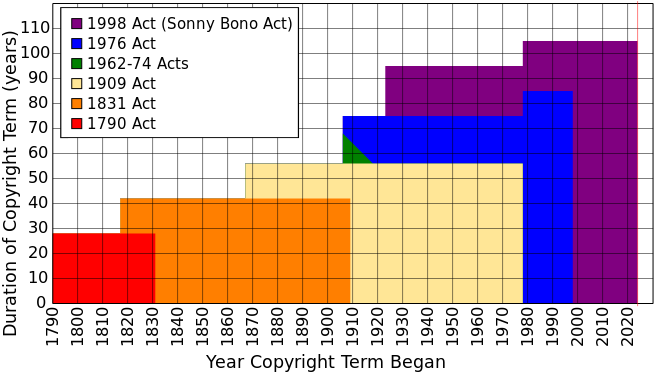On January 1st of each year, different cultural artifacts entire the public domain due to the expiration of their copyright – and indeed, 2024 is no different – as books, musical composition, plays, movies and more produced in the year 1928 find their way into the public domain, which means they are free to use and reference without having to acquire copyright permissions. Of course, if an author references or uses an artifact in the public domain, they should be sure to cite it, but items in the public domain are no longer constricted by any copyright law.
The 95 years rule is not a given, however, as Congress has determined this number based on finding a balance between protecting author and publisher rights during the course of their lives, and ensuring that important artistic and cultural artifacts are – after due time – able to be accessed more freely, rather than rotting away behind permissions paywalls or other copyright constrictions. And some types of content are protected for longer – sounds recordings, for instance, are currently released to the public domain after 100 years, but recordings produced between 1947 and 1956, protection will last 110 years. Since the first copyright laws were established, the trend has been to extend the time of protection in order to protect authors rights – the argument could be made, however, that this protected period is perhaps too lengthy, as it is certainly much longer than an average lifespan. The chart below shows the timelines produced by the differing copyright acts of their respective moments.


In 2024, while sound recordings may be protected – there is a great deal to welcome into the public domain. Joining the public domain – among other items – are JM Barrie’s Peter Pan play, Virginia Woolf’s Orlando, and Charlie Chaplin’s silent film The Circus. Additionally, while the sound recording has not yet hit the public domain, the lyrics and music to Cole Porter’s “Let’s Do it, Let’s Fall in Love” have also entered into the public domain. And while Winnie the Pooh has been in the public domain for the past two years, he will now be joined by his longtime friend from the Hundred Acre Wood, as Tigger was introduced in The House at Pooh Corner, which was published in 1928.
As a result of some famous character and stories coming into the public domain, new artistic reproductions are taken up without having to pay for copyright permissions. As a result some very interesting titles have been released, including Winnie-the-Pooh: Blood and Honey and Mickey’s Mouse Trap, a pair of horror movies that certainly bring an alternative experience to the beloved characters. And indeed, the impact of cultural artifacts hitting the public domain means more than new inspired slasher films – items on the public domain are useable in teaching materials without the burden of securing copyright to acquire full versions of texts. Scholars can more readily and fully study bodies of work that are in the public domain without incurring expenses, which enhances the global scholarly discourse and allows for seminal work from our cultural past to freely accessible to those interested in studying it – and indeed, on the flip side, if copyright laws continue to get stronger, the ability for scholars and and librarians to make use of assets will be continually diminished in favor of protecting the copyrights for authors and creators who indeed deserve their due – but are more than likely passed on.
For more information on the public domain, please consult the resources below:
